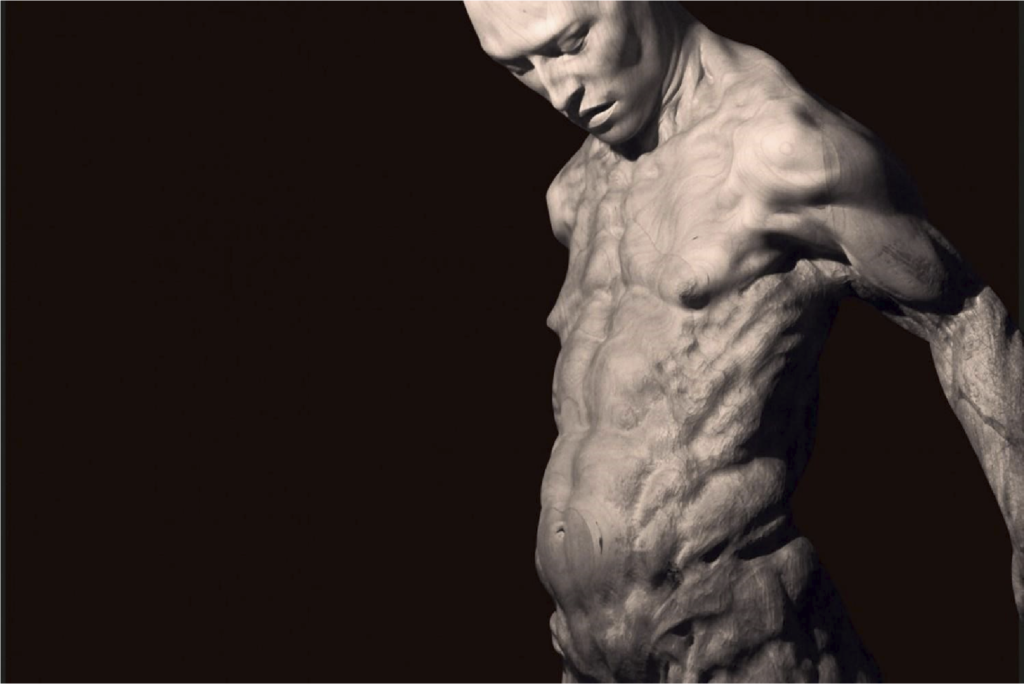by Erik Casais
1. The state of the medium ( my apologies )
For centuries, men felt the need to transform Nature by modelling it. Even some old pundits –in the ancient past– opposed Arts and Nature to outstand the artifice –or better, the intelligence-, implied in the process of creation. But children have been having fun for centuries, sinking their hands in the mud, modelling it. Having fun.

British Museum. Marble copy of the famous Discobolus, originally made in bronze by Myron. C. 450 B.C.
Maybe to be an artist is just to have fun doing useless things. Today is common sense that “the process” is more important than the outcome. Well, I don’t know … I can only reflect what I see. So what I see, must I wonder? First objection: The eye of the critic is often tired –if you don’t believe me, please, ask Jerry Saltz-. To be accurate, it suffers a kind of sclerosis, it has all the symptoms. The critic is blind. There is no colour to enjoy the party at the critics’ party.
The question is simple: The Art World is full of meaningless objects. Soulless. Grey. Empty. Evil. It’s a sign of the times. Europe as centre stage has perished. Where is the colour then? Stop, look inside and think again. Try.

Ingrávido. Wood sculpture. Madrid. 2013. Orrico.
Watching the impressivework made by César Orrico –Spanish sculptor born in 1984- one tries to be serious, academy-oriented, scrupulous and feels the impulse to talk about Greeks or Christians. Well, a certain remembrance to the Greeks pops up with shapes, with the use of materials or the movement… Yes, it’s Myron’s Discobolus flexing the arm to throw the disc during the Olympics, 25 centuries ago. Yes, Historical memories. Ok. I agree.
But, pay attention.
The muscles are tense making a huge effort. The eye needs some cold water taken from a river to be cleared, to be refreshed, to discover the truth in an Art World stuck by mediocrity. And, for me, it’s a duty to remark the ability of this young man struggling to elevate the status of the medium with the perfection of his craft.

César Orrico working at his studio in Madrid.
You can see it by yourself. The nerves are tense. The muscles are flexed. Everybody comes around watching the performance. It’s a sign of the times. Maybe –more than ever- one needs to stop and calm down, relax and enjoy the simplicity of a craft – the art craft – well understood from the beginning at Cesar Orrico’s workshop. His work speaks explicitly.


Ingrávido. A masterpiece.
2. The anatomy lesson, revisited
First of all, it’s necessary to comprehend that our cultural momentum is mostly driven by an essential form of communication -you could call it ‘vibrations’. The primacy of some kind of concept over any physical action: the exact opposite of Jackson Pollock, to mention it. It´s a way to avoid the stain of work, I’m thinking about Damien Hirst and the industrial processing of art, like the production of an I-phone, from the desk to the manufacturer in an exercise of abstraction that is an intellectual challenge and a productive task, mixed in a scene of progress that presumes to have overtaken the industrial age and salutes a future of virtuality made from a different nature, maybe only mental. The model Asimov predicted that virtual reality will be the human evolution.

Vanity. Bronze. 2016
Orrico goes against this and he starts from the beginning. The forge. A simple piece of wood in its rawness, like a primal scream. The importance of the elements used in the process of creation is one of the pillars mentioned by Orrico, this is what inspires him. His study of the human anatomy to make “Ingrávido” (Madrid, 2013) is an astonishing work of precision and a masterclass. There is no old master in my mind to compare it to. The advantage in his work is an achievement from our times: Technology. One can create pieces like this combining old techniques with the latest discoveries in the science field: the perfect combination of technique and talent, exposing every detail with concision and knowledge and it’s hard to know if the outcome is simplicity or complexity. César uses wood, iron, bronze, marble –artificial stone- to elaborate his figures, he mixes techniques (woodcarving, forging, modelling, dissolvent, etc.) and materials (wood, stone, etc). He exposes textures that show the veins, the nudity of sculpted skin.Blends contraries: cold and warm, fluid and solid, weight and light. He fixes our mind. The result is a highly recommended artist.

Edith. Artificial Stone, iron and wood. 2013
Gea. Artificial Stone, iron and wood. 2015

Giro II. Bronze. 2016

